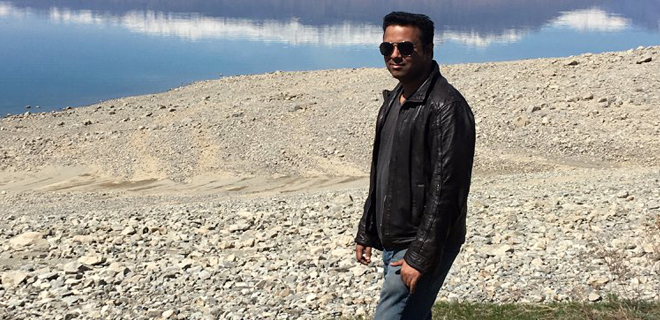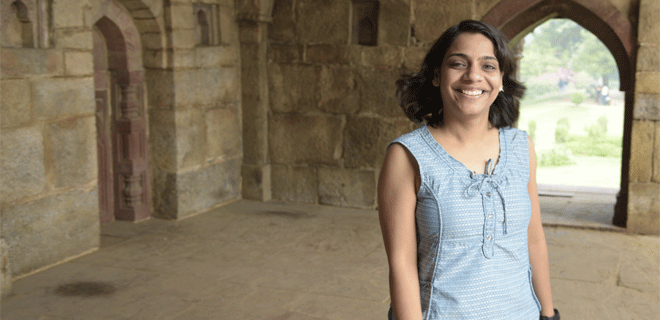Footloose And Worry-Free
Priya Nair and Preeti Kulkarni offer tips to ensure a hassle-free vacation this summer
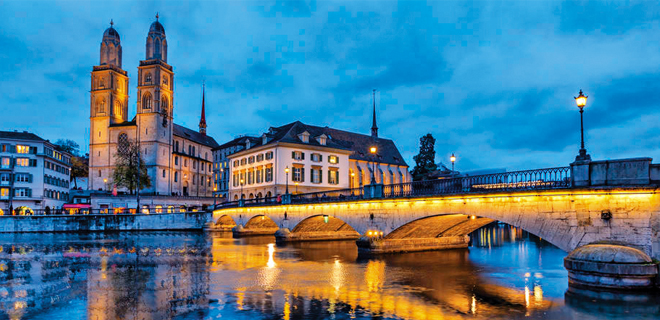
Holidays can mean different things to different people. For some it’s a chance to unwind in a comfy hotel room, while for others it’s an opportunity to explore new places and learn about the local way of life. No matter what you expect from your ideal holiday, there are deals and packages to suit your preferences. Here’s how to plan ahead.
According to data from Economic Survey of India 2016-17, Indians are warming to travel like never before. In 2016, over 20 million Indians travelled overseas, points out Karan Anand, Head, Relationships, Cox & Kings. “From anecdotal data we can safely assume that the growth in outbound travel every year would be approximately 15-18 per cent,” says Anand. “According to data from the Ministry of Tourism, the total domestic journeys crossed the billion mark in 2016 itself.”
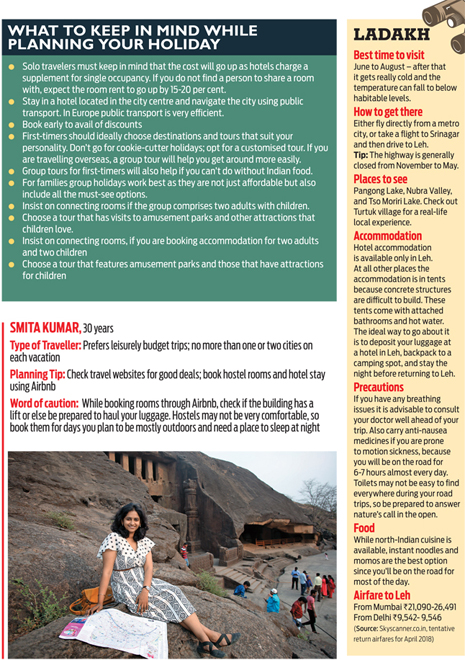
So how does one go about it? Should you choose a group tour or opt for a tailor-made holiday? Or would you prefer to plan everything on your own? With summer around the corner, it’s the right time to plan your holiday. For the travel issue, Outlook Money talked to three avid travellers with diverse travel profiles to glean advice from their trip diaries. From the advantages of solo travel to the upside of group tours to nifty ways to handle money, they have it all covered.
The Big Two
When you are planning a holiday, the two biggest expenses are travel and accommodation. Once you decide your destination and your budget, it is advisable to get these two expenses out of the way. It is advisable to plan a few months in advance to get good deals on airfares and hotels.

When Smita Kumar, who works with a CSR consultancy firm, went to France last year, she booked her tickets three months in advance. “I did not want to see France as a typical tourist. I wanted to focus only on one place – or two at the most – and see more of those two places. If I had extended my trip to other European cities, it would have been too hectic,” she explains.
Once she decided on Paris and Versailles as her preferred destinations, Kumar settled on a budget of `100,000 and started surfing online for the best deals. She found refundable tickets to Paris for less than `40,000. For her stay, she checked out both Airbnb and Booking.com. On Booking.com, she opted for hostel rooms that fit her budget. “In most hostels you don’t have to pay in advance and they give you the flexibility to cancel at the last minute. These bookings also serve as proof of stay when you apply for a visa,” she says.
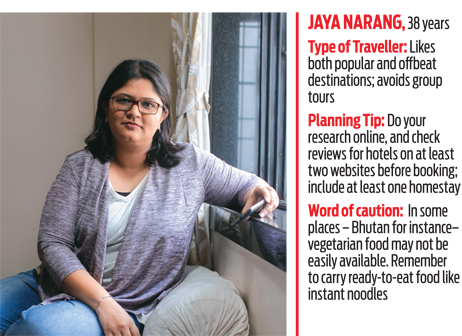
Airbnb offers you the convenience to choose single rooms or the entire property. Payment terms also differ across listings. For some of the listed properties, you might be expected to pay the entire amount upfront, while some others may charge half the amount while booking and the rest at the end of your stay. Some listings also allow cancellations for a fee.
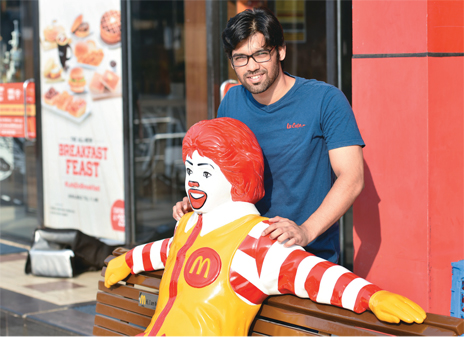
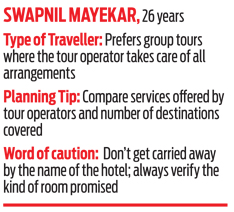
Jaya Narang, a sales and marketing professional, is an avid traveller who steers clear of groups. “I don’t like package tours because you’re bound by the routine. Often you have to leave the hotel at eight in the morning and return at eight in the evening. I prefer flexibility and plan my own trips,” she says. Once she’s chosen her destination, Narang does research to put her itinerary in place. Only after this does she books the flight tickets and hotel rooms. She also makes it a point to include one homestay. “Homestays offer a local experience and that’s a good idea for places you want to explore. But if I’m going to a place I have visited several times and just want to relax, a hotel would be fine,” she says.
Online reviews for hotel rooms are not foolproof. It’s wise to check user reviews from at least two independent websites. Narang, for instance, reads reviews on TripAdvisor and HolidayIQ before booking.
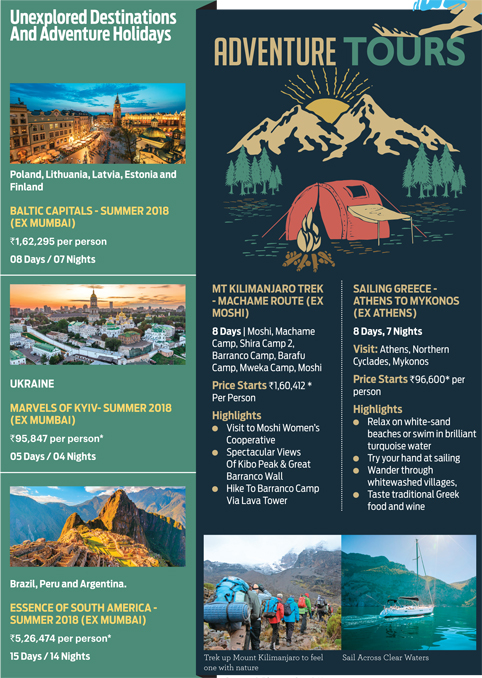
Birds Of A Feather
For those who like the company of other travellers, IT professional Swapnil Mayekar recommends group tours. Mayekar and his parents went on a European tour organised by Mango Holidays, which covered 10 countries and 24 cities. It cost `2.5 lakh per person, for which the family dipped into savings.
“It was a good tour as we got what was promised,” says Mayekar. “We compared the package with other tour operators before zeroing in on this one. There were no hidden expenses – all meals were taken care of. We had to pay only for our shopping! However, we realised that hotels booked by Kesari are better in comparison to the others as they choose well-known properties.”
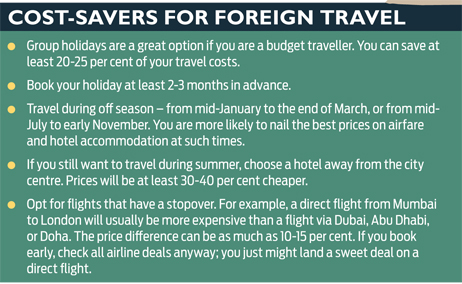
One should always talk to the tour organiser before finalising the booking. For example, if you’re told that you will be put up in Holiday Inn, make sure you ask for details of the rooms they plan to book. You may expect a deluxe suite, but the organiser might have a more modest option in mind, which can be a huge let down. Similar is the case with restaurants, Mayekar cautions.

Currency On The Go
Make your payments in advance whenever possible, and not just for flights and hotels. For instance, it is possible to book train tickets in advance for intercity travel in Europe. This ensures cheaper rates. “Taking the train from Paris to Nice proved expensive because I hadn’t booked in advance. Also, in Europe, the locals travel out of their cities in summer. So ticket prices tend to be higher,” says Kumar. If possible, ask a local from the area to book train tickets for you as it works out cheaper. It’s the same with Airbnb.
Another problem one could face in Europe is obtaining change for currency notes of higher denominations. “In France, most people swipe cards or resort to digital payments, and I found it very difficult to get change for a €500 note. It’s advisable to carry currency of smaller denominations,” says Kumar. Narang, on the other hand, used foreign currency cards on her Europe trip, and had no problem using cash in Bhutan.
Budget Planning
As Narang goes on at least two trips every year, and spends `50,000 to `60,000 on each, she makes sure that she saves up for her travels. “While planning the trip, I get to know how much it would cost,” she says. “I’ve never taken a loan for a holiday so far. I don’t understand the logic of taking a loan.” On a similar note, Kumar staggers her payments to reduce the strain on her finances – she books air tickets one month, accommodation next, and for visas the following month.
For those like Kumar and Narang who plan their travels in advance, there are many interesting schemes to help them with their budgets. One such scheme is Cox & Kings’ ‘Save-Now-Travel-Later’. Through this, a consumer can schedule his or her trip a year in advance and pay the tour costs in 11 instalments leading up to the holiday. The 13th instalment is contributed by Cox & Kings. “This helps people who would like to travel a year later, keeping their budget in mind,” says Anand.
Destination Matters
Some popular domestic destinations for summer travel in India are Ladakh, Shimla, Kashmir, and Meghalaya. While destinations like Munnar and Kochi in Kerala and Goa are also popular, they are fast becoming year-round favourites. Popular hill stations include Mahabaleshwar, Matheran, and Lonavala for people in Mumbai and Pune; Coorg and Ooty in the south; and Mount Abu and Kashmir for those living in Delhi. Hampi is another popular destination for those interested in heritage.
“Over the last few years, due to excellent flight connectivity, the Andamans too has become popular, especially for water sports. Neighbouring countries such as Nepal and Bhutan are also getting good numbers during summer,” Anand adds. For Indian travellers looking to travel abroad, the UK, Switzerland, France, Germany, and Italy continue to be among the most visited destinations during summer. New destinations such as Iceland and Scandinavia are also gaining popularity.
How To Fund Your Dream Holiday
International travel doesn’t come cheap, but there are ways to fund such trips. Travellers should plan ahead and invest for the goal instead of dipping into savings or taking a loan, suggest Preeti Kulkarni & Priya Nair
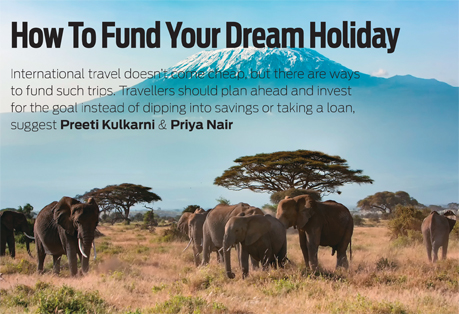
An eight-day vacation to the UK can easily cost you `1.3 lakh, while a six-day tour around Paris and Switzerland could set you back by `1.2 lakh. And a nine-day trip to Eastern Europe can be yours for `1.1 lakh – if you don’t mind taking a package tour. These are the approximate amounts you may need to shell out for your international summer holiday. These are big spends that cannot be funded through credit cards – after all, you do not want to start your holiday on borrowed money.

Invest For A Stress-free Holiday
Despite the huge expenses involved, there’s no escaping the annual getaway. Financial planners believe that holidays – and expensive ones at that – have lately become an integral part of a family’s budget. Given that an international holiday can cost upwards of `1 lakh per person, it calls for extensive planning to ensure that your finances don’t come under the very stress that you are trying to beat.
So, the best way to fund your holiday is to plan for it. And many travel enthusiasts are choosing to do just that of late. “People across age groups are planning their travel well in advance. Generally, retirees are better equipped as they would have a corpus, but youngsters may not be adequately prepared,” says Pankaj Mathpal, CEO, Optima Money Managers.
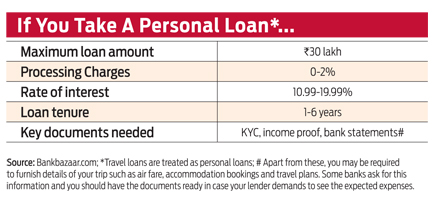
“The ideal approach is to plan well in advance – six months to a year before your holiday. Start a systematic investment plan (SIP) dedicated to this goal after estimating the cost of your domestic or international tour,” says certified financial planner Bhakti Rasal. She recommends parking money in liquid funds for visa requirements as well as emergency needs while travelling.
Once you have fixed your travel budget – comprising tickets, accommodation, and other expenses – you should start saving towards this goal. “You can start a SIP in a liquid or debt mutual fund. Set an auto debit instruction with your bank on the very next day after you get your salary. This will ensure that you don’t end up spending your salary on other things,” says ER Ashok Kumar, CEO and co-founder, Scripbox. He recommends debt and liquid funds as they offer higher rates of return and are not subject to market volatility unlike equity funds.
Mathpal is in favour starting even earlier. “Since most clients aspire for international travel, our advice to them is to save five years in advance in equity funds. If your travel is a year away, you will have to start investing in a liquid fund or a fixed deposit. You could also look at savings accounts with banks that offer higher rates of interest, often up to seven per cent,” he says.
Insurance Is Indispensable
Savings apart, you also need to put in place a fall-back option in case of emergencies. Certain countries, like those in the Schengen region, insist on travel insurance before they issue a visa, but you must buy a policy even if your destination country does not insist on one. Remember, your regular health insurance policy will not cover any expenses incurred abroad.
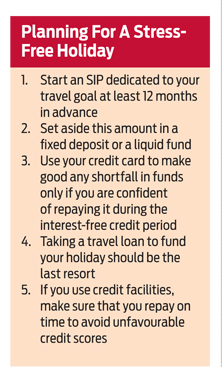
An adequate travel insurance cover can absorb hassles that can ruin an otherwise great holiday. Not only can it take care of your hospitalisation expenses (if any) while you are abroad, it can also compensate for flight cancellations and lost baggage – niggles that you often forget to factor in while on a holiday. By insulating your savings against emergencies, you can prevent a slide into a debt trap.
On Borrowed Wings
Non-banking financial companies (NBFCs) and loan aggregation portals often promote travel loans during the vacation season, with some promising to sanction loans within just 30 minutes. While it is tempting to avail of a loan if you are falling short of funds, it’s best avoided. “Travelling is an optional or discretionary expense, so try to avoid loans or high-interest holiday loans,” advises Rasal.
These loans are essentially unsecured, which means the rate of interest could be as high as 18 per cent. “If you’re sure you want a loan, do note that you will be charged an exorbitant interest on a personal loan. On the other hand, if you were to save in mutual funds through a SIP, the money you invest would yield results and become a source of passive income, not a liability,” says Kumar. A credit card is a better option if the shortfall is small and you can clear the dues the following month.
“Loans should be the last resort. Travel loans are not different from personal loans – the rate of interest can be as high as 10.99 to 18 per cent,” says Navin Chandani, chief business development officer, Bankbazaar.com. The repayment period could range from one to six years, depending on the lender and the loan amount.
Be it travel loan or credit card, use funds sparingly. Ensure that you pay off your credit card dues in time to avoid paying high interests – often as high as 39-44 per cent. Also use a prepaid forex card instead of your credit card to shop and make withdrawals. “Holidays are a great time to spend and have fun, so you should be especially careful to avoid binge spending and piling up dues on your credit card,” says Patanjali Somayaji, co-founder and CEO of Walnut, a budgeting app.
Draw up a budget and stick to it by cutting out big-ticket impulse purchases. “Many of our younger clients are not fully aware of the implications of an unfavourable credit score. Impulse spending can not only get you into a debt trap, but also affect your credit score,” Somayaji cautions.
preeti.kulkarni@outlookindia.com
The World On A Platter
With a host of deals on offer, booking your dream holiday this summer has become easier than ever before, says Anagh Pal
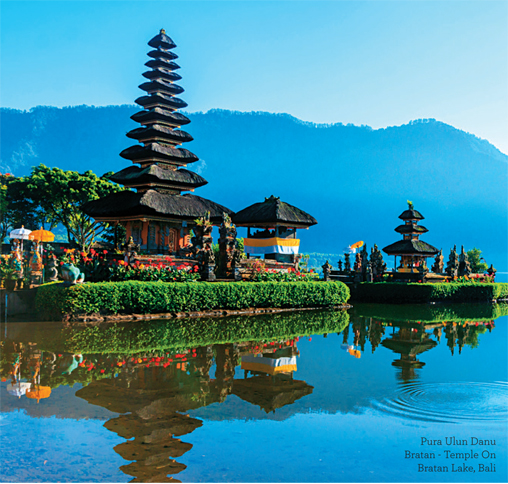
Indians are looking to spend more on travel and experiences than ever before. A recent survey by travel search engine Kayak revealed that 38 per cent of Indians prefer to spend money on travel, even more than on other activities like shopping and food. The data also indicates that with summer around the corner, 16 per cent of Indian holidaymakers are planning to spend over `3 lakh for their summer travel and 45 per cent plan to spend at least `1 lakh.
Indians today not only seem keen to explore new destinations but are also ready to spend on those experiences. Says Amit Taneja, Chief Business Officer – International Markets, Cleartrip.com, “Summer and trips go hand-in-hand. International is clearly a big theme for the upcoming summer travels with the growth in bookings being over 40 per cent as compared to last year, despite an overall fare increase of six per cent.”
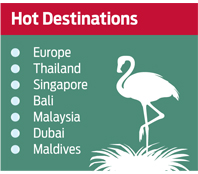
Hot Destinations
The choice of destination depends on many factors – primarily cost, accessibility, and the kind of experiences available. “Budget is another thing travellers keep in mind. Perhaps that’s also one reason why short-haul destinations in south-east Asia are emerging as preferred destinations among Indian travellers,” says Taneja. Europe, of course, continues to be a favourite destination for those with a higher budget.
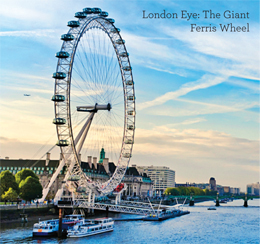
Holiday Packages
Travel portals have designed a wide variety of holiday packages for the Indian traveller. While customised packages are available at a premium, group tours work out to be more budget-friendly. “The lucrative holiday packages are among the top picks, with more and more travellers now aware that booking in advance is a good way to secure the best deals. City tours, popular attractions, beaches, and shopping are the most common choices that customers look for while booking,” says Mohit Gupta, COO, MakeMyTrip.
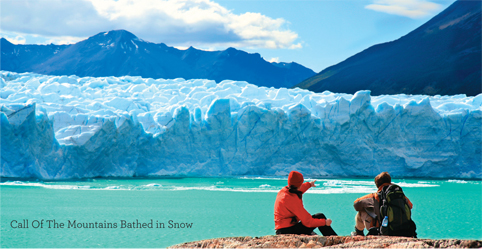
Airfare Deals
Another reason why international travel has picked up is the availability of cheap airfare to foreign locations. “Encouraged by the continued low airfares, Indian travellers have emerged as the newest globetrotters,” says Sharat Dhall, COO (B2C), Yatra.com. Travellers who prefer a DIY approach can check travel portals for airfare offers and get the best deals. “Given that summer continues to remain one of the busiest travel periods, we are partnering with banks to offer great deals, including reduced prices for airfare up to `10,000. We are also running various destination-specific airfare offers, after looking at the most frequented travel destinations among our customer base,” says Gupta.

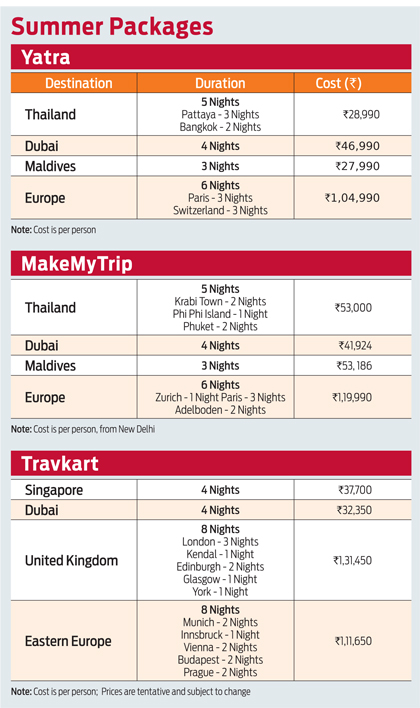
Scout for the best offers
With a plethora of travel portals and apps at your disposal, planning and booking your dream holiday is easier than ever before. “One should try and make their booking in advance and be flexible about travel dates. One will get the best bargains this way,” says Dhall. Also, while shopping on travel portals, make sure to cash in on any loyalty programs offered. Yatra, for example, has a loyalty programme called eCash that can be earned by booking on the portal and later redeemed on future bookings. MakeMyTrip has a three-tier reward programme that lets you earn points on every booking, and also get hand-picked travel deals, free stays and vouchers.
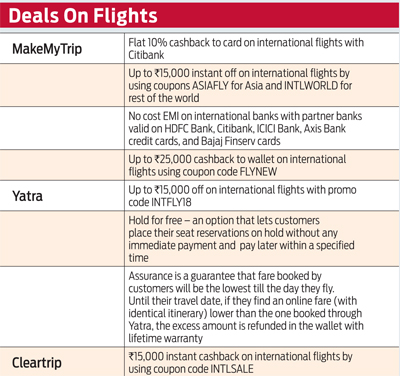
So if you haven’t packed your bags already, you have more than one reason to do so now.
North Sikkim: Nature At Its Pristine Best
The unspoilt beauty of this state is a treat to the eyes and the soul. Anagh Pal gives a first-person account of a weekend trip to the ‘abode of the gods’
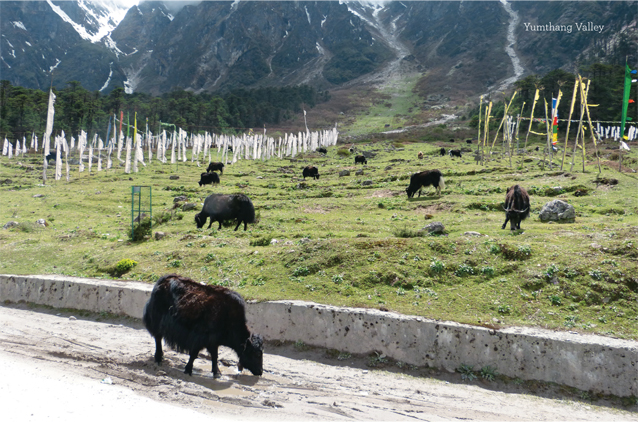
I have a sweet and loving relationship with Sikkim, the pretty state nestled in the eastern Himalayas. Since I live in Kolkata, Sikkim’s capital Gangtok is an overnight journey by train – or a fifty-minute flight – and then a four-hour drive up the winding hilly roads. Sikkim has a unique kind of charm; the state is abundant in natural bounty, offers views of some of the most majestic peaks on the planet (including the mighty Kanchenjunga), and lets you indulge in a variety of local delicacies. But what I like most about Sikkim are the people, who are warm, friendly, and helpful.
Whenever I can find a few days off from work, or even a longish weekend, I stuff my backpack with the bare essentials – my camera and a set of warm clothes – and set off. Being a solo backpacker, I do not make any bookings beforehand; one can manage pretty well, even during the peak season, and when one is flexible with plans and keeps things open, it all works out in the end.
An Adventurous Weekend
This particular experience I will recall was in April 2017, when I decided to visit the strikingly beautiful northern part of the state over a long weekend. The day I reached Gangtok was rest day, which I spent sitting in a quaint cafe on MG Marg, the town’s main boulevard, sipping on a cup of Irish coffee as I watched kids playing on the streets below and chasing the ice-cream man who sold his wares from a brightly coloured van. I had booked a two-nights/three-day trip to Yumthang Valley and Gurudongmar Lake from the local office. I would be starting the next morning and travelling in a shared jeep with five other people, none of whom I knew yet. But then meeting new people is always a high point.

We started the next morning as planned and very soon I had struck up a friendship with my fellow travellers. The ride was a long one on mountain roads and we reached Chungthang in the evening after stopping for lunch and crossing several waterfalls on the way. From here the road bifurcates; one leads to Lachen and the other to Lachung, named after two mountain tributaries of the Teesta which meet here. The best thing about a stop in these regions is that you can have your fill of hot tea and steaming momos. Another hour and a half took us to Lachen at 9,500 ft, a small idyllic town amidst the clouds where we put up for the night.
A Thing Of Beauty
The next morning we left early at 3 am. We stopped at Thangu village at 13,500 ft; an alpine meadow dotted with small wooden houses, and had a meal of hot Maggi and coffee. This was our last stop before Gurudongmar. We were warmly clad in woollens and jackets, but still shivered as the wind was cold outside. We all huddled next to the wooden fire in a tiny cottage where an old lady greeted us with a smile.
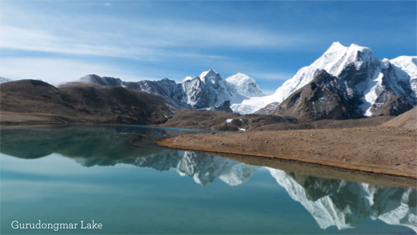
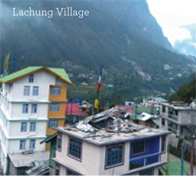
The next hour and a half was a steep climb. We went past Indian military base camps and crossed the tree line. The beauty at such high altitudes is not what we expect mountains to be; it is actually a desert - stark, devoid of any vegetation, cold and bleak, yet mesmerisingly beautiful. Finally we reached Gurudongmar Lake at 17,800 ft, one of the highest lakes in the world and located only 5 km from the Tibetan-Chinese border.
What greeted us was perhaps one of nature’s most supreme works of art. Imagine a lake with crystal-clear water, surrounded by snow-capped peaks reflected perfectly in its waters! For the first few moments we were spellbound, struck by the beauty in front of us. Sights such as these leave you with a sense of awe and have a therapeutic effect.
The halt was not very long as one may face breathlessness at these altitudes, so we headed back to Lachen. After lunch and a little rest we reached Lachung, which is a rather pretty village.
Valley Of Flowers
The next morning we started at the crack of dawn and drove to Yumthang Valley. Located at 11,693 ft, it is a picturesque meadow with giant but gentle yaks grazing on the grassy plains, a river flowing through the valley, and a backdrop of towering mountain peaks, lined with lush pine and silver fir trees. At this time of the year the meadow is dotted with rhododendrons, bathing the valley in myriad hues. I sat on a rock with my feet in the water, soaking in the beauty of the place, breathing in the fresh air, listening to the murmur of the river, and listening to the tinkling of bells tied to the necks of the animals.
We reached Gangtok in the evening, our limbs aching from the long ride, but with our minds fresh and rejuvenated. The next day we would be back in the plains, back to the routine of normal life, but with memories of a wonderful trip that we wouldn’t forget in a hurry. After all, it’s experiences such as these that recharge our batteries and keep us going.
Better Safe than Sorry: Insure Before Travelling
There is a range of products available in the market to insure against the risks and perils that come with the travel. Suyash Desai lists out details of travel policies that can come to your aid in an emergency
ICICI Lombard Travel Insurance Products offered:
1. Single Trip Insurance Policy Coverage
2. Gold Multi Trips
Policies include:
Total loss of checked-in baggage (including handbag)
Personal accident
Medical benefits (including evacuation cost)
Loss of passport
Emergency cash advance
Missed flight connection
Political risk and catastrophe evacuation
Policies exclude:
Claim due to pre-existing medical condition/ailment whether declared or undeclared
Addiction to alcohol and drugs
Mental disorder and depression
Venereal diseases
Sexually transmitted diseases like HIV/AIDS
Radiation (nuclear weapons-induced)
Sporting activities
Expenses arising out of loss of valuables, money, tickets etc
The Costs:
Total premium for the sum insured of 250,000 is `2,297
Total premium for the sum insured of $100,000 is `2,002
Total premium for the sum insured of $50,000 is `1,203
(The above package is calculated for a single traveller in the three months-50 years age group, inclusive of taxes. The premium is calculated for a trip to the US and Canada.)
Bajaj Allianz Travel Insurance Products offered:
1. For Individuals
2. For Family
3. For Students
4. For Senior Citizens
5. For Domestic Travel
Policies include:
Medical expenses (individual and family)
Loss/delay of checked baggage
Cashless service for medical expenses abroad
Loss of passport
Emergency cash advance
Automatic claim settlement service for customers through one-stop platform,Travel Ezee
Home burglary insurance
Policies exclude:
Pre-existing medical condition/ailment whether declared or undeclared
Routine physical or other examination
Medical expenses beyond the expiry of the policy period
Suicide, attempted suicide or wilful, self-inflicted injury
Mental disorder and anxiety
Venereal disease, alcoholism or drugs abuse
Manual work, hazardous occupation or engaging in any criminal or illegal act
Pregnancy, miscarriage, abortion, among others
The Costs
For 25 years male, total premium for the sum insured of $500,000 for Travel Prime plan is `1,668 and Travel Elite plan is `1,539
For 25 years male, total premium for the sum insured of $200,000 for Travel Prime plan is `1,426 and Travel Elite plan is `1,289
For 25 years male, total premium for the sum insured of $50,000 for Travel Prime plan is `1,257 and Travel Elite plan is `1,115
(The above is exclusive of taxes. Worldwide tour includes the US and Canada)
Tata AIG Travel Insurance
Products offered:
1. Travel Guard
2. Asia Travel Guard
3Domestic Travel Guard
4. Student Guard - Overseas Health Insurance Plan
Policies include:
Compensation for lost baggage
Compensation to buy essentials, if baggage arrival is delayed
Compensation on burglary or attempted burglary
Reimbursement for duplicate or new passport
Distress allowance for every 24-hour period, if flight is detained by hijackers
Compensation for accidental death or injury during the trip
Reimbursement for emergency hospital treatment and transport
Expenses incurred to transport remains back to India
Policies exclude:
Suicide or self-inflicted injury
HIV/AIDS, mental or nervous disorder
Harm while being under the influence of alcohol or other intoxicants or hallucinogens
A participant in felony, riot, crime or civil commotion
Loss arising out of war, civil war, invasion, insurrection
Damage related to nuclear radiation and contamination
The Costs:
For 25 years male, total premium for the sum insured of $500,000 (Platinum) is `2,095
For 25 years male, total premium for the sum insured of $250,000 (Gold) is `1,853
For 25 years male, total premium for the sum insured of $100,000 (Silver Plus) is `1,638
For 25 years male, total premium for the sum insured of $50,000 (Silver) is `1,405
(Includes 18 per cent GST. Premium is calculated for the Americas - North as well as the South)
HDFC ERGO General Insurance Products offered:
1. Individual Travel Insurance
2. Family Travel Insurance
3. Student Travel Insurance
Policies include:
Emergency medical expenses for outpatient or in-patient expenses incurred due to illness or accident
Personal accident (medical expenses in case of accidental death or permanent disability)
Flight delays or rescheduling (if more than six hours, reimbursement for meals and subject to submission of bills)
Expenses incurred for the purchase of toiletries, clothing and medication, in case of delay of checked-in baggage for more than 12 hours
Loss of baggage
Compensation for damage resulting from death, injury or damage to health or property.
Other benefits (this includes personal accident, hospital cash, emergency dental treatment, medical evacuation, repatriation, loss of checked baggage, financial emergency assistance, hijack distress allowance and contingency travel benefit)
Policies exclude:
Civil or foreign war or terrorism
Self-inflicted injury or suicide
Under influence of liquor, drugs or narcotics
Participation in any sport as a professional player
Participation in any criminal act
HIV/AIDS
Treatment of mental problems
Taking part in hazardous sport
The Costs:
For 25 years male, total premium for the sum insured of $500,000 (Titanium) is `2,029
For 25 years male, total premium for the sum insured of $200,000 (Platinum) is `1,550
For 25 years male, total premium for the sum insured of $100,000 (Gold) is `1,311
For 25 years male, total premium for the sum insured of $50,000 (Silver) is `1,071
For 25 years male, total premium for the sum insured of $30,000 (Bronze) is `1,020
(Includes 18 per cent GST. The insurance premium is calculated for worldwide tour).
Religare Travel Insurance
Products offered:
1. Explore (International Travel)
2. StudentExplore (Travel Insurance for Students)
3. GroupExplore (Group Travel Insurance Policy)
Policies include:
Compensation for hospitalisation or medical evacuation
Compensation for trip delay
Compensation for delay of checked-in baggage and loss of passport
Compensation for repatriation of mortal remains
Policies exclude:
Expenses arising out of alcohol or drug use or abuse
War and nuclear perils
Ionising radiation
Any intentional self-injury, suicide or attempted suicide
Any claim relating to hazardous activities
Involved in a breach of law
HIV/AIDS
The Costs:
Total premium for the sum insured of $500,000 (Gold Plan) is `2,795 and (Platinum Plan) is `2,810
Total premium for the sum insured of $300,000 (Gold Plan) is `2,205 and (Platinum Plan) is `2,262
Total premium for the sum insured of $100,000 (Gold Plan) is `1,628 and (Platinum Plan) is `1,656
Total premium for the sum insured of $50,000 (Gold Plan) is `1,351 and (Platinum Plan) is `1,383
(Includes 18 per cent GST. The premium is calculated for worldwide tour.)
Giving Wings To Itchy Feet
Women on Wanderlust (WOW) founder Sumitra Senapaty shares the joys of managing a women-only travel club

The Wanderlust idea took birth 14 summers ago, not as a tour agency, but an all-women travel club that would act as an alternative social platform for like-minded women. We have come a long way from the days when women were content staying within the confines of their immediate circles.
The thing that works best for WOW is word-of-mouth recommendations, although social media and peer influence too have boosted the aspirations of women. We have taken women on heritage tours, nature walks, wine-and-cheese sessions, movies and so on.
We provide accommodation in good 4/5-star hotels located in city centres, not on the outskirts. Our group size is always between 12 and 18 people – not a big crowd that moves along, but a like-minded group of women who interact well with one other. Our coaches are spacious, comfortable, and sometimes half-empty, so that we can have a relaxed ride. Our trips come loaded with local experiences that include culture, cuisine, and informative tour guides, accompanied by a team leader known as the WOW Buddy.
At the same time, our trips are not super-luxurious; they are value for money and provide the exact services that women want. In fact, our service starts when the Wanderer first books the trip; we give detailed tips and information and then provide doorstep service for collecting cheques, money, and passport – like an internal courier.
While it is true that there are varied budgets and not all can afford the most expensive trips (like Antarctica, which costs `6 to `8 lakh), we have affordable trips to many other places. Destinations covered so far include Antarctica, China, Japan, Ladakh, Bhutan, Rajasthan, Kenya, USA, Peru, Europe, Iran, Israel, Australia, New Zealand, Maldives and more.
There are many travel operators who offer cheaper rates but they are rarely focussed on quality or on providing unforgettable experiences. Our USP is our special women-friendly experience, and members who are well-heeled – consumers can choose between cheap and quality holidays.
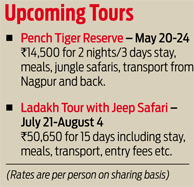
We focus on all-women group travel, as there’s safety in numbers. It gives women the option to travel by themselves but also enjoy the comfort and security that a group provides. We have opted to focus on women between the ages of 25 and 65 who have a cosmopolitan outlook on life, and who bring along a sense of humour, adventure, and zeal. Today, we have women across age groups interacting not only on trips but also at subsequent ‘catch-ups’.
Age has never been a barrier. In fact, I’ve found that women who are in their thirties and are concerned about life in their sixties find comfort in the company of those who are already in that age group. Seeing women twice their age enjoying their lives can be a great confidence booster and a source of aspiration.
Today, WOW has evolved into a closely-knit community of women who are passionate about travel. The WOW Club has taken on an important role in empowering women through travel. It is my greatest joy and satisfaction that I have helped women achieve their dreams.
Age Of Customisation
Travellers who wish to explore a destination at their pace and want unique sightseeing experiences can opt for personalised tours
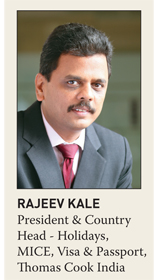
It’s the age of customisation – whether it’s clothes, pizza toppings, or even your fitness routine. No wonder this trend is gradually redefining the travel industry as well. Customers now ask for exactly what they want and the demand for customised tours has seen a strong growth in the last few years.
There are some recommended itineraries according to the kind of vacation the traveller desires. However, it can also be fully customised, taking into account their time, budget, and interests. According to data available with Thomas Cook India, half of all travellers opted for personalised tours in 2017.
The new-age traveller demands more experiences and wants something unique or innovative in their itinerary. Travellers today are constantly evolving and, thanks to social media, have higher expectations and demands. They look for experiences and the traditional one-size-fits-all approach just won’t work for them. This customising process starts by understanding the wants and needs of the family, or group, and filtering down the possibilities to a plan that fits them.
Thomas Cook India has witnessed a steady uptake in customised, bespoke travel. This tends to attract travellers who either prefer to be with their own small private group, or whose schedules don’t line up with the group departures. Expert local guides, private airport transfers, luxurious accommodations, and enriching sightseeing experiences are all included; often with access to places not open to the public.
Whilst many travellers equate tailor-made tours with staying in the most lavish of accommodations, it is often the less expensive features that make these trips special for someone who wants to truly get a feel of the destination. Authenticity and unique experiences are the new luxuries.
One of the main benefits that custom tours offer is that they open up a range of opportunities that group tours don’t offer. At Thomas Cook India, we have recommended a range of options from ice hotels in Canada to cave dwellings in Turkey for travellers who are looking for something beyond the ordinary. Other experiences include cherry blossom tours in Japan, wildlife reserves and safaris in Kenya, kayaking in the Abu Dhabi mangroves, hologram concerts in Korea, and pub crawls in Lan Kwai Fong, Hong Kong. The challenge here is to make sure no client ends up with experiences that look good on paper but are not fun. We have observed that involving clients right from the planning stage also makes them feel comfortable and leads to faster decision-making.

Customised tour packages are ideal for all kinds of travellers, particularly those who wish to explore a destination at their pace and according to their interests – for instance, families travelling with children. The advantage in this case is that it gives you a chance to tailor the itinerary according to your kids’ needs and preferences, and not disrupt their routine. Custom tours are also an excellent option for multi-generation families with diverse interests and styles that need to be catered to while on holiday.
It’s the traveller today who is calling the shots. This is indeed the future of travel.
Travelling Together
Affordability is only one of the perks of holidaying as a group; travellers also benefit from the company of like-minded folk
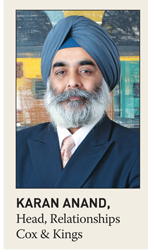
Group tours, for both domestic and international holidays, have been around for a while as they address the needs of a large section of travellers. The average size of a group tour ranges from 25 to 48 and it could also depend on the destination.
The reasons for the popularity of group tours range from their affordable pricing to the convenience and comfort they offer. The hassle of planning is eliminated. There are so many options available, and these are simplified further based on customers’ choice of location and other preferences.
When you look at the cost factor, group tours are more affordable than individual tours. For example, Cox & Kings has a package called European Highlights, an 8-day/7-night tour that covers Germany, the Czech Republic, Hungary and Austria. It is priced at approximately `1.16 lakh ex-Mumbai, and that’s a per-person price including return airfare, taxes, travel insurance, Schengen visa, all entrance fees to monuments, hotel accommodation, breakfasts and dinners, as well as, tips and the services of an English-speaking guide.
Why are group tours more affordable when compared to custom tours? This is because we at Cox & Kings buy in bulk, and pass on the benefits to travellers as we deal in volumes. All must-see sights are included in the tour. However, if you have to undertake this tour independently, you would have to shell out at least `2 lakh. These savings make group tours highly popular.
Another important aspect of a group tour is that it is popular among first-time travellers, especially those who travel overseas, as the tour operator takes care of all the requirements — flights, accommodation, local transport, visas, etc. Travellers do not have to seek out experiences on their own or fend for themselves; everything is clearly defined in the itinerary.
Thirdly, a significant section of Indian travellers include vegetarians and Jains, who find it a challenge to find their type of cuisine when they travel overseas. We provide exclusive tours for vegetarians and Jains, where we have our own chefs stationed at important hotels across the world cooking authentic vegetarian and Jain meals to suit the palates of our guests. We also have exclusive tours for a Maharashtrian clientele.
We make it a point to select tour directors who can converse in Hindi, Gujarati, or Marathi, apart from English. This feature is much appreciated by our travellers as they get to know about important places and landmarks in their local language, without the constraints of any language barrier, and thus have a more memorable time.
There are customers who have travelled with us on multiple occasions over a period of time. Some destinations such as South Africa, Kenya, USA, South America, Australia and New Zealand are best experienced when travelling in a group. Of course, cost plays a significant role in the decision-making process. It is an important reason why people opt for a group tour, especially when travelling with families.
For example, our Marvels of Europe Tour, which is a 7-day/6-night holiday that covers France, Switzerland, and Austria, comes at a price of approximately `1.18 lakh per person, ex-Mumbai. If you are a family of four, you can travel to Europe for under `5 lakh all-inclusive and enjoy a memorable holiday. If you do the same itinerary as a customised package, it will work out to at least `7.5 lakh for a family of four. Thanks to the huge savings, more and more travellers are opting for group tours.
One downside is that every traveller has to stick to a strict time schedule. As it is a set itinerary with maximum inclusions, you cannot travel at your own pace. All the same, with the boom in Indian outbound travel, we can expect a large number of Indians opting for the convenience of group tours.
Holiday Learning Can Be Fun
Doe’s Ecotours’ itinerary may not always be offbeat, but they combine unexplored places with a local flavour, discovers Priya Nair

If wandering through the usual touristy spots and putting up with clueless tour guides is not your idea of a vacation, you should try Doe’s Ecotours. As the name suggests, the tours combine heritage with wildlife, and include local experiences to make your holiday a learning experience while having fun all along.
Says Doreen D’Sa, who runs Doe’s Ecotours, “I do a lot of investigation about the location to find out which activities can make it interesting for travellers. I work four or five months in advance.”
D’Sa, who quit her job as a librarian at the British Council to become an entrepreneur in ecotourism, finalises her trips for the entire year and sends mailers to her regular travellers. She then announces each trip about four months ahead. Typically the bookings get full within a few days. The rates are all-inclusive and cover travel, meals, accommodation, and other costs such as sightseeing.
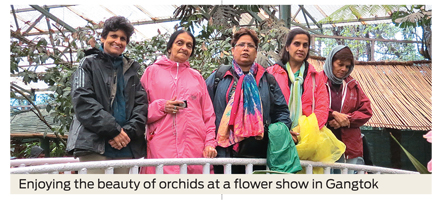
“I usually stick to budget hotels or homestays so that more people can afford the trips. But I ensure that the places are clean,” she says. In Sikkim, for instance, good homestays were easy to find. In Shekhawati in Rajasthan, D’Sa managed to get a heritage accommodation at a reasonable rate. In Kamarajar Valley near Kodaikanal, she came up with Double Dutch resort, close to a valley and offering a scenic view.
The destinations D’Sa selects may not always be offbeat, but she makes it a point to include unexplored places within that destination. For instance, a recent trip to Goa saw her group heading out to Mhadei Wildlife Sanctuary in Chorla Ghat, which borders three states (Karnataka, Goa and Maharashtra). They also visited Salim Ali Bird Sanctuary in Chorão Island and Cumbarjua Canal, where the estuaries of the Zuari and Mandovi rivers meet before entering the sea. There they saw otters and crocodiles in addition to several bird species. “Most people only go to beaches and churches in Goa. But I took them to places known for wilderness,” said D’Sa.
The innovations do not end there. On a trip to Pench Tiger Reserve, a tourist destination bordering Madhya Pradesh and Maharashtra, D’Sa held fun quizzes and games to talk about the natural history of the place. Most people who go to the Andamans visit Port Blair or Havelock Island. Doe’s Ecotours included Mount Harriet National Park near Port Blair, in a locale that is usually ignored.
The tours are ideal for people who share an interest in the outdoors and are keen to learn more about nature and heritage. “When like-minded people come on our tours they form a close bond. Even after the trip, people meet up and share photographs and so on,” D’Sa says.
priya@outlookindia.com


